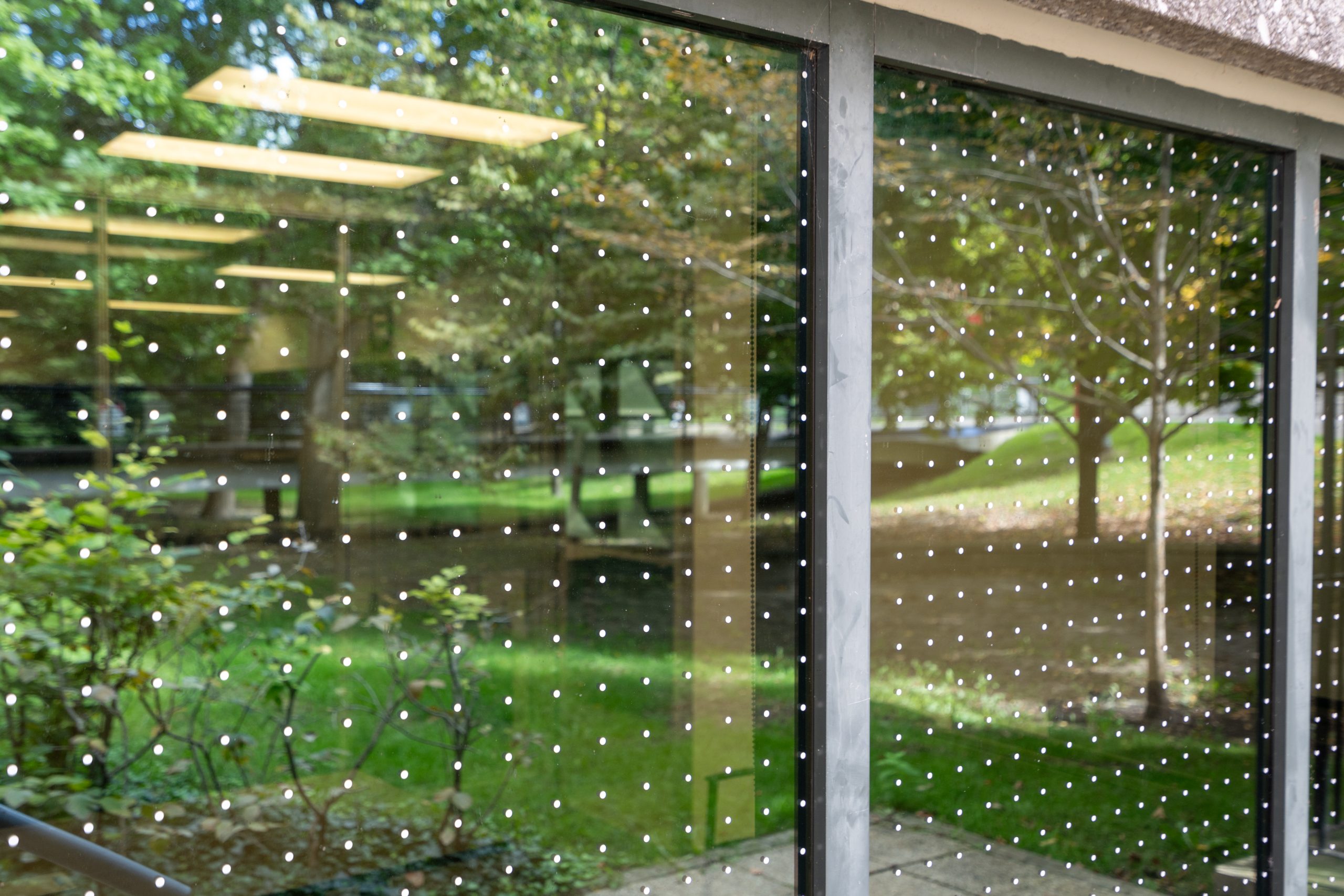Soaring to safety: working towards a more bird safe campus
The University of Toronto is making significant strides in reducing bird collisions and enhancing bird safety on campus through strategic building modifications and active community engagement.

The St. George campus is situated along important bird migratory routes. During spring and fall migrations, the area sees a diverse array of species in transit, many of which are at risk of colliding with building walls or windows. White-throated sparrows, ruby-throated hummingbirds and golden-crowned kinglets are just a few of the species that frequently collide with university buildings. “The bird situation on campus on one hand is amazing because, like the rest of Toronto, we are treated to so many different species streaming through each spring and fall, migrating to breeding or wintering grounds,” says Carly Davenport, founder of BirdSafe U of T. “On the other hand, it’s a little devastating because so many of these birds are killed.” So far this year there have been 542 bird-to-window collision reports at the U of T St. George campus, representing 74 species of birds. “With some bird populations steadily declining since the 1970s, improving bird safety on campus helps to conserve biodiversity and protect species,” says Chelsea Dalton, project manager, Sustainability Office.
U of T’s Sustainability Office, in collaboration with BirdSafe U of T, who work tirelessly to advocate for bird safety, monitor collisions and implement FLAP Canada’s bird-safe campus program on the St. George campus, has undertaken significant efforts to protect these birds on campus. Together, they have implemented bird-friendly glass retrofits and engaged in educational outreach initiatives. To make glass bird-friendly, it is important to make the glass more visible to reduce the risk of collisions. These modifications typically involve applying specialized coatings or using oil-based paint markers on windows, making them more visible to birds while maintaining the building’s original exterior design.
Notable successes in addressing bird safety have come from the strategic installation of building retrofits. In particular, the Max Gluskin House—a high-risk collision site for birds—underwent substantial permanent modifications to mitigate bird collisions this year. Several other campus buildings have also received bird-safe treatments. The Edward Johnson Faculty of Music, the Galbraith bridge, E.J. Pratt Library, Innis College and the Ramsay Wright Laboratories have all been treated.

To maximize their effectiveness, bird-collision marker dot treatments should be applied to the exterior window surface in a grid spaced no more than two inches apart. The dots themselves must be at least one-quarter inch in diameter and provide visible contrast at all times. Significantly, treatments must cover the entire glass area.
Investing in these initiatives has already yielded promising results for the university. Remarkably, zero bird collisions with windows have been reported in areas where retrofits have been installed. “It is very encouraging to see such a success in improving bird safety,” says Dalton.
Looking ahead, the university will continue to advocate for the use of bird-friendly glass on campus to become a safer place for our feathered friends. “We look forward to making progress with bird advocacy groups to identify and treat the areas that pose the highest risk to birds,” says Dalton.
